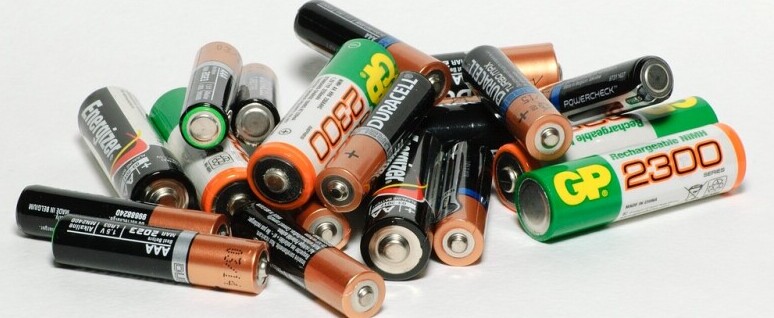Ultimate Guide To EV Battery Technology And Longevity
Ever wondered what powers your electric vehicle? It’s all about the batteries these days. They have come a long way, kind of like smartphones but cooler. Electric vehicle (EV) battery technology has become a big deal, changing how we think about and approach transportation.
Remember when EVs barely had enough juice to get you to the corner shop and back? Fast forward, and now we’re talking major road trips on a single charge. That leap is all thanks to the evolution of battery technology. Big brains working tirelessly, pushing boundaries to cram more and more power into those packs, making EVs practical and sustainable.
Lithium-ion is the superstar here, the same stuff keeping your phone and laptop alive. But there’s more to EV batteries than just lithium-ion. Solid-state batteries are emerging in the tech world, promising even more efficiency and reliability. And hey, who doesn’t love a good promise of faster, longer-lasting charges?
Battery tech isn’t just static, sitting in its little box. It’s evolving, almost like it’s got its own roadmap. Cutting-edge materials, newer designs, and the quest to lower costs while hiking performance are shaking things up.
But why all this fuss over batteries? Simple. They hold the key to driving down emissions and cutting ties with fossil fuels. They’re central not only to EV range and efficiency but also sustainability and environmental impact.
Maximizing Battery Longevity Through Optimal Charging Practices
Charging an EV isn’t just about plugging in and watching Netflix. How you charge can seriously affect how long your battery lasts. So let’s get into some savvy charging moves.
Ever noticed your phone battery life getting a bit saggy when you keep it at 100% all the time? EVs have a similar story. Keeping the charge between 20% and 80%—that’s the sweet spot. Going full charge might sound tempting but regularly hitting 100% can wear your battery out faster.
Fast charging stations are the new thing, right? Super convenient, but they can be a bit harsh on your battery, especially if you do it all the time or in extreme heat. It’s like cramming for your final exams every night—it takes a toll. Try mixing it up with slower, regular charging.
Think about this: charging your car every night might not be necessary. Unless you’re using up all that range daily, those daily top-ups can add stress. Space out the charges a bit more if you can.
Keeping these tricks up your sleeve helps stretch the battery’s lifespan. In the long run, not only does it save on potential repair bills, but it also keeps your ride running smoother for longer. A bit of mindful charging can make a difference.

Impact of Temperature on EV Battery Life
When it comes to your EV’s battery, temperature is a big influencer. Batteries, like us, prefer it just right—not too hot, not too cold.
Extreme temperatures can be a nightmare. Hot summer days might have you hitting the beach, but your EV’s battery would rather chill indoors. Those high temps can cause the battery to degrade faster, cutting down its efficiency over time.
On the flip side, freezing conditions can put your battery in a sluggish mode. It’s like trying to run a marathon in knee-deep snow—not ideal. Especially if you’re planning a winter road trip, your range might not be quite what you expect.
What can you do? Try parking in the shade on hot days or give your EV a cozy garage spot during those chilly winters. It helps keep the battery in a comfortable, stable climate, which is like perfect weather for your battery.
Many EVs come with thermal management systems. It’s like a personal climate control for your battery, keeping things balanced. If your vehicle’s got it, that’s a win because it helps maintain optimal battery health without you having to think about it too much.
Basically, treating your battery right when it comes to temperature can keep it humming along happily way past that 100,000-mile mark. After all, happy battery, happy drive.
Driving Habits that Influence Battery Longevity
How you drive your EV can make a big difference in how long the battery lasts. Think of it like this: a gentle hand on the wheel is like giving your battery a stress-free holiday.
When you’re at the lights, it’s tempting to zoom off, but smooth acceleration is kinder on your battery. Hammering down the pedal might be thrilling, but it can drain the battery faster and put extra wear on it.
Aggressive driving can be a drag on your energy reserves. Keeping things mellow, like embracing that Sunday drive vibe, helps keep the battery in good shape. It’s gentle on the wallet, too—less wear and tear means fewer repairs.
Ever heard the term “idling”? Turns out, excessive idling can be a silent battery drainer. If you’re parked and likely to be for a while, turning off the car keeps the battery from unnecessary use.
Mindful driving is about more than just looking cool on the road. It’s about being smart with your energy use. When you treat the battery nice via smooth, controlled driving habits, it pays dividends by lasting longer.
Battery Maintenance and End-Of-Life Solutions
Keeping your EV battery in tip-top shape isn’t just a thing for mechanics. Everyday maintenance plays a key role in ensuring you get the most life out of your battery.
Managing the state of charge is a pro tip for storing your EV long-term. Keep it between 25% to 75% charged, acting like a middle ground to keep things balanced. Avoid leaving it fully charged or close to empty, as neither extreme is battery-friendly.
When it’s time to call it quits on a battery, recycling is the way forward. Recycling helps recover valuable materials like lithium, cobalt, and nickel—basically like salvaging treasure from what you might’ve thought was junk. Many manufacturers and third-party services have recycling programs set up, making it easy to do right by the planet.
Proper maintenance extends beyond just charging tricks. Regular software updates provided by your EV manufacturer can enhance performance and efficiency. It’s like giving your battery a quick tune-up, sometimes delivering tweaks that help with energy use and longevity.
Sustainable disposal of EV batteries isn’t just a future goal—it’s happening now. More and more companies focus on eco-friendly solutions, ensuring that old batteries are dealt with responsibly. By getting involved, not only do you play a part in reducing waste, but you also boost the growth of a circular economy.




4 comments